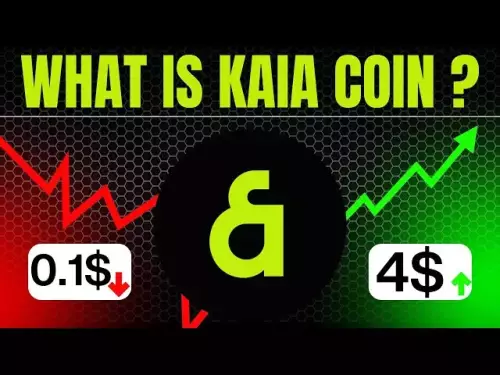-
 bitcoin
bitcoin $112715.707551 USD
-1.71% -
 ethereum
ethereum $4101.475385 USD
-3.01% -
 tether
tether $1.000644 USD
-0.02% -
 bnb
bnb $1207.619465 USD
-6.77% -
 xrp
xrp $2.501451 USD
-3.98% -
 solana
solana $202.947124 USD
-3.32% -
 usd-coin
usd-coin $1.000295 USD
0.04% -
 dogecoin
dogecoin $0.203884 USD
-4.47% -
 tron
tron $0.317154 USD
-1.72% -
 cardano
cardano $0.695009 USD
-4.43% -
 hyperliquid
hyperliquid $38.853961 USD
-8.23% -
 chainlink
chainlink $18.988674 USD
-4.64% -
 ethena-usde
ethena-usde $1.000233 USD
-0.03% -
 stellar
stellar $0.337050 USD
-3.63% -
 bitcoin-cash
bitcoin-cash $536.861728 USD
-1.28%
How to set a stop loss point for POL trading? Avoid excessive losses
Setting a stop loss for POL trading is essential for risk management; it automatically sells your tokens if the price hits a predetermined level, protecting your investment.
Apr 30, 2025 at 10:29 pm

Setting a stop loss point for POL (Polygon) trading is a crucial strategy to manage risk and avoid excessive losses. A stop loss order is an order placed with a broker to buy or sell once the stock reaches a certain price. This article will guide you through the process of setting a stop loss for POL trading, ensuring you can protect your investments effectively.
Understanding Stop Loss Orders
A stop loss order is designed to limit an investor's loss on a position in a security. For POL trading, setting a stop loss means you are instructing your trading platform to automatically sell your POL tokens if the price drops to a certain level. This helps you avoid significant losses if the market moves against your position.
Choosing the Right Stop Loss Level
Determining the appropriate stop loss level for POL trading involves several factors. You need to consider the volatility of POL, your risk tolerance, and your investment goals. A common approach is to set the stop loss at a percentage below your purchase price. For example, if you bought POL at $1.00, you might set a stop loss at 10% below that price, which would be $0.90.
Steps to Set a Stop Loss on a Trading Platform
To set a stop loss for POL trading, follow these steps:
- Log into your trading platform: Ensure you are logged into the platform where you hold your POL tokens.
- Navigate to the POL trading page: Find the section where you can trade POL.
- Select the order type: Choose the option to place a stop loss order.
- Enter the stop loss price: Input the price at which you want the stop loss to trigger. For example, if you bought POL at $1.00 and want a 10% stop loss, enter $0.90.
- Confirm the order: Review your order details and confirm the stop loss order.
Monitoring and Adjusting Your Stop Loss
Once your stop loss is set, it's important to monitor the market and adjust your stop loss as needed. If POL's price increases, you might want to adjust your stop loss to a higher level to lock in profits. For example, if POL rises to $1.20, you could move your stop loss to $1.08, maintaining a 10% buffer.
Using Trailing Stop Losses
A trailing stop loss is a type of stop loss order that moves with the market price. It is set at a percentage or dollar amount below the market price. For POL trading, a trailing stop loss can help you capture more gains while still protecting against significant losses. To set a trailing stop loss:
- Log into your trading platform: Access your trading account.
- Navigate to the POL trading page: Go to the section where you can trade POL.
- Select the trailing stop loss option: Choose the trailing stop loss order type.
- Set the trailing amount: Decide on the percentage or dollar amount you want the stop loss to trail by. For example, a 10% trailing stop loss on a $1.00 purchase would start at $0.90 and move up as the price increases.
- Confirm the order: Review and confirm your trailing stop loss order.
Common Mistakes to Avoid
When setting a stop loss for POL trading, there are several common mistakes to avoid:
- Setting the stop loss too tight: If the stop loss is too close to the current price, it may be triggered by normal market fluctuations, resulting in unnecessary sales.
- Ignoring market volatility: Failing to account for POL's volatility can lead to stop losses being triggered too frequently.
- Not adjusting the stop loss: Failing to move the stop loss up as the price of POL increases can result in missed opportunities to lock in profits.
Practical Example of Setting a Stop Loss
Let's walk through a practical example of setting a stop loss for POL trading. Suppose you bought POL at $1.00 and want to set a 10% stop loss.
- Log into your trading platform: Access your trading account.
- Navigate to the POL trading page: Go to the section where you can trade POL.
- Select the order type: Choose the option to place a stop loss order.
- Enter the stop loss price: Input $0.90 as the stop loss price.
- Confirm the order: Review your order details and confirm the stop loss order.
If POL's price drops to $0.90, your stop loss will trigger, and your POL tokens will be sold automatically, limiting your loss to 10%.
Frequently Asked Questions
Q: Can I set multiple stop losses for the same POL position?A: Yes, some trading platforms allow you to set multiple stop losses for the same position. This can be useful if you want to protect against different levels of price drops.
Q: What happens if the market gaps down and my stop loss is not executed at the exact price I set?A: In the event of a market gap, your stop loss order may be executed at the next available price, which could be lower than your set stop loss price. This is known as slippage.
Q: Is it possible to cancel or modify a stop loss order after it has been placed?A: Yes, you can usually cancel or modify a stop loss order at any time before it is triggered. Check your trading platform's specific instructions for how to do this.
Q: How does the time of day affect the effectiveness of a stop loss for POL trading?A: The time of day can impact the liquidity and volatility of POL, which in turn can affect the execution of your stop loss order. Trading during high liquidity periods, such as during major market hours, can help ensure your stop loss is executed more effectively.
Disclaimer:info@kdj.com
The information provided is not trading advice. kdj.com does not assume any responsibility for any investments made based on the information provided in this article. Cryptocurrencies are highly volatile and it is highly recommended that you invest with caution after thorough research!
If you believe that the content used on this website infringes your copyright, please contact us immediately (info@kdj.com) and we will delete it promptly.
- BTC, ETH, and Crypto Presales: Navigating the Storm with MoonBull & LivLive
- 2025-10-15 11:05:13
- BlackRock's Bitcoin ETF Buzz Down Under: Australia's Crypto Scene Heats Up
- 2025-10-15 11:45:15
- Trump, Bitcoin, and Trump Media: A New York Minute on Crypto's Latest Twist
- 2025-10-15 11:05:13
- Altcoin Season Incoming? Historical Setups and Trends to Watch
- 2025-10-15 11:45:15
- Crypto Scam Crackdown: Cambodian Executive, Bitcoin Seizure, and a $14 Billion Heist
- 2025-10-15 11:10:00
- Bitcoin's Wild Ride: Structural Demand Survives the Liquidation Tsunami
- 2025-10-15 11:10:00
Related knowledge

Practical parameter settings for a Bitcoin multi-timeframe moving average system
Sep 18,2025 at 10:54pm
Optimizing Timeframe Combinations for Bitcoin Trading1. Selecting appropriate timeframes is crucial when building a multi-timeframe moving average sys...

How can I filter out false breakouts in Dogecoin high-frequency trading?
Sep 22,2025 at 01:00am
Understanding False Breakouts in Dogecoin Trading1. A false breakout occurs when Dogecoin's price appears to move beyond a defined support or resistan...

Techniques for identifying tops and bottoms in the Bitcoin on-chain NVT model
Sep 20,2025 at 07:54pm
Understanding the NVT Model in Bitcoin Analysis1. The Network Value to Transactions (NVT) ratio is often described as the 'P/E ratio' of the cryptocur...

What does the surge in open interest in Bitcoincoin futures mean?
Sep 20,2025 at 11:18pm
Understanding the Surge in Dogecoin Futures Open Interest1. A surge in open interest within Dogecoin futures indicates a growing number of active cont...

How can I use the Ethereum USDT premium to gauge market sentiment?
Sep 18,2025 at 11:55pm
Understanding the Ethereum USDT Premium1. The Ethereum USDT premium refers to the price difference between USDT (Tether) traded on Ethereum-based plat...

What should I do if Ethereum staking yields decline?
Sep 20,2025 at 06:18am
Understanding the Causes Behind Declining Ethereum Staking Yields1. The Ethereum network transitioned to a proof-of-stake consensus mechanism with the...

Practical parameter settings for a Bitcoin multi-timeframe moving average system
Sep 18,2025 at 10:54pm
Optimizing Timeframe Combinations for Bitcoin Trading1. Selecting appropriate timeframes is crucial when building a multi-timeframe moving average sys...

How can I filter out false breakouts in Dogecoin high-frequency trading?
Sep 22,2025 at 01:00am
Understanding False Breakouts in Dogecoin Trading1. A false breakout occurs when Dogecoin's price appears to move beyond a defined support or resistan...

Techniques for identifying tops and bottoms in the Bitcoin on-chain NVT model
Sep 20,2025 at 07:54pm
Understanding the NVT Model in Bitcoin Analysis1. The Network Value to Transactions (NVT) ratio is often described as the 'P/E ratio' of the cryptocur...

What does the surge in open interest in Bitcoincoin futures mean?
Sep 20,2025 at 11:18pm
Understanding the Surge in Dogecoin Futures Open Interest1. A surge in open interest within Dogecoin futures indicates a growing number of active cont...

How can I use the Ethereum USDT premium to gauge market sentiment?
Sep 18,2025 at 11:55pm
Understanding the Ethereum USDT Premium1. The Ethereum USDT premium refers to the price difference between USDT (Tether) traded on Ethereum-based plat...

What should I do if Ethereum staking yields decline?
Sep 20,2025 at 06:18am
Understanding the Causes Behind Declining Ethereum Staking Yields1. The Ethereum network transitioned to a proof-of-stake consensus mechanism with the...
See all articles


























![Staking ATH: How To Stake $ATH in October 2025 with 523% APY — [Step-By-Step Guide] Staking ATH: How To Stake $ATH in October 2025 with 523% APY — [Step-By-Step Guide]](/uploads/2025/10/15/cryptocurrencies-news/videos/staking-ath-stake-ath-october-apy-stepstep-guide/68eef94d80903_image_500_375.webp)















































